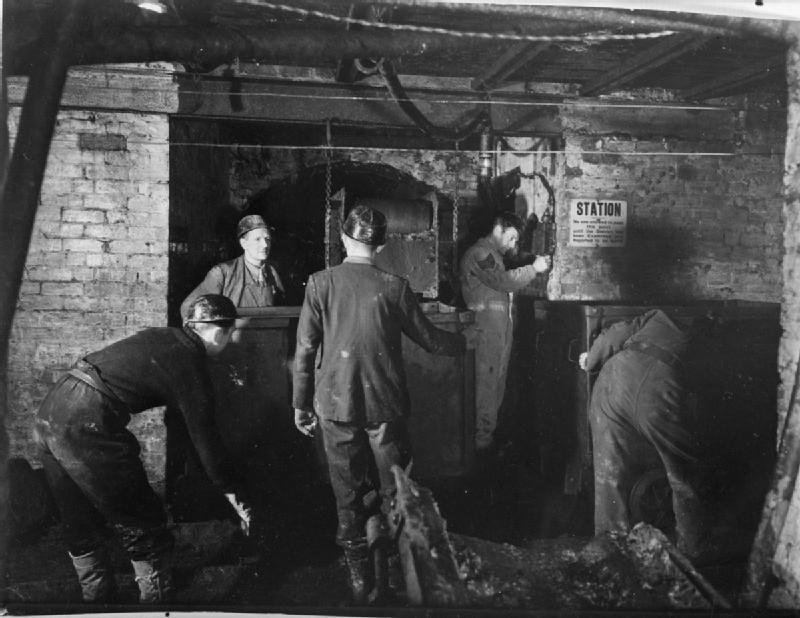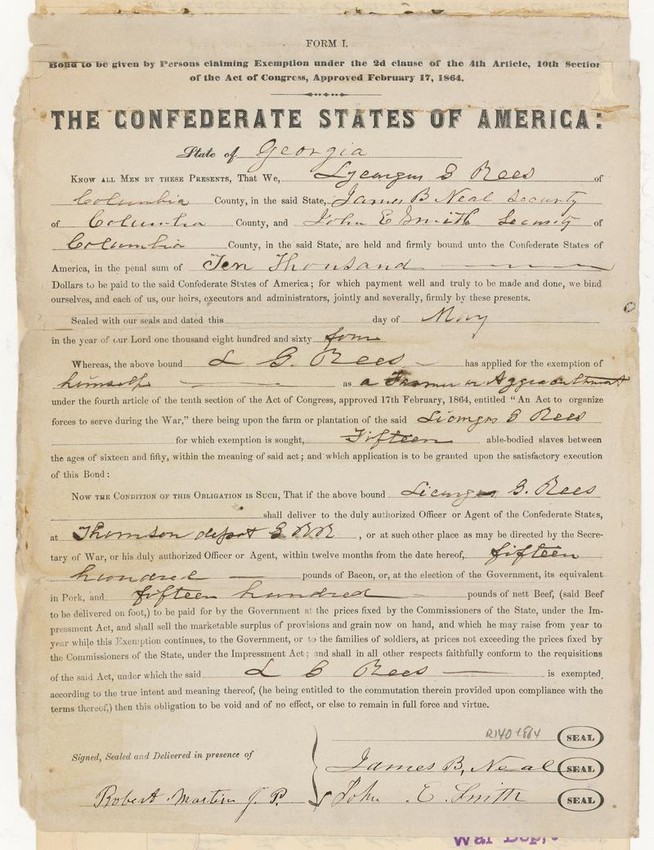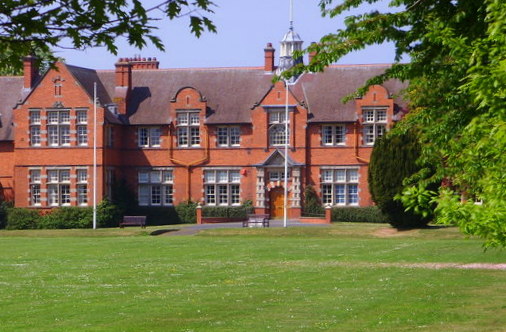|
Reserved Occupation
A reserved occupation (also known as essential services) is an occupation considered important enough to a country that those serving in such occupations are exempt or forbidden from military service. In a total war, such as the Second World War, where most fit men of military age were conscripted into the armed forces, exceptions were given to those who performed jobs vital to the country and the war effort which could not be abandoned or performed by others. Not only were such people exempt from being conscripted, they were often prohibited from enlisting on their own initiative, and were required to remain in their posts. Examples of reserved occupations include medical practitioners and police officers, but what is or is not a reserved occupation will depend on war needs and a country's particular circumstances. Reserved occupations in the UK in World War I Some of the reserved occupations included clergymen, farmers, doctors, teachers and certain industrial workers such as c ... [...More Info...] [...Related Items...] OR: [Wikipedia] [Google] [Baidu] |
Military Service
Military service is service by an individual or group in an army or other militia, air forces, and naval forces, whether as a chosen job (volunteer) or as a result of an involuntary draft (conscription). Some nations (e.g., Mexico) require a specific amount of military service from every citizen, except for special cases, such as limitation determined by a military physical or religious belief. In the United States, a mental disorder does not necessarily disqualify a recruit so long as no treatment had been given within 36 months. Most countries that use conscription systems only conscript men; a few countries also conscript women. For example, Norway, Sweden, North Korea, Israel, and Eritrea conscript both men and women. However, only Norway and Sweden have a gender-neutral conscription system, where men and women are conscripted and serve on equal formal terms. Some nations with conscription systems do not enforce them. Nations which conscript for military service typically ... [...More Info...] [...Related Items...] OR: [Wikipedia] [Google] [Baidu] |
Bevin Boys
Bevin Boys were young British men conscripted to work in coal mines between December 1943 and March 1948, to increase the rate of coal production, which had declined through the early years of World War II. The programme was named after Ernest Bevin, the Labour Party politician who was Minister of Labour and National Service in the wartime coalition government. Chosen by lot as ten per cent of all male conscripts aged 18–25, plus some volunteering as an alternative to military conscription, nearly 48,000 Bevin Boys performed vital and dangerous civil conscription service in coal mines. Although the last ballot took place in May 1945 (shortly before VE Day), the final conscripts were not released from service until March 1948. Few chose to remain working in the mining industry after demobilisation; most left for further education or for employment in other sectors. Bevin Boys were targets of abuse from the general public, who mistakenly believed them to be draft dodge ... [...More Info...] [...Related Items...] OR: [Wikipedia] [Google] [Baidu] |
Selective Service Act Of 1917
The Selective Service Act of 1917 or Selective Draft Act () authorized the United States federal government to raise a national army for service in World War I through conscription. It was envisioned in December 1916 and brought to President Woodrow Wilson's attention shortly after the break in relations with Germany in February 1917. The Act itself was drafted by then-Captain (later Brigadier General) Hugh S. Johnson after the United States entered World War I by declaring war on Germany. The Act was canceled with the end of the war on November 11, 1918. The Act was upheld as constitutional by the United States Supreme Court in 1918. History Origins At the time of World War I, the US Army was small compared with the mobilized armies of the European powers. As late as 1914, the Regular Army had under 100,000 men, while the National Guard (the organized militias of the states) numbered around 115,000. The National Defense Act of 1916 authorized the growth of the Army to 165,0 ... [...More Info...] [...Related Items...] OR: [Wikipedia] [Google] [Baidu] |
Emancipation Proclamation
The Emancipation Proclamation, officially Proclamation 95, was a presidential proclamation and executive order issued by United States President Abraham Lincoln on January 1, 1863, during the Civil War. The Proclamation changed the legal status of more than 3.5 million enslaved African Americans in the secessionist Confederate states from enslaved to free. As soon as slaves escaped the control of their enslavers, either by fleeing to Union lines or through the advance of federal troops, they were permanently free. In addition, the Proclamation allowed for former slaves to "be received into the armed service of the United States." On September 22, 1862, Lincoln issued the preliminary Emancipation Proclamation. Its third paragraph reads: That on the first day of January, in the year of our Lord, one thousand eight hundred and sixty-three, all persons held as slaves within any State or designated part of a State, the people whereof shall then be in rebellion against the U ... [...More Info...] [...Related Items...] OR: [Wikipedia] [Google] [Baidu] |
Twenty Negro Law
The "Twenty Negro Law", also known as the "Twenty Slave Law" and the "Twenty Nigger Law", was a piece of legislation enacted by the Confederate Congress during the American Civil War. The law specifically exempted from Confederate military service one white man for every twenty slaves owned on a Confederate plantation, or for two or more plantations within five miles of each other that collectively had twenty or more slaves. Passed as part of the Second Conscription Act in 1862, the law was a reaction to United States President Abraham Lincoln's preliminary Emancipation Proclamation, which was issued barely three weeks earlier. The law addressed Confederate fears of a slave rebellion due to so many white men being absent from home, as they were fighting in the Confederate army. The Confederacy enacted the first conscription laws in United States history, and the percentage of Confederate soldiers who were conscripts was nearly double that of Union soldiers. Background By the ... [...More Info...] [...Related Items...] OR: [Wikipedia] [Google] [Baidu] |
Confederate Conscription Acts 1862–1864
The Confederate Conscription Acts, 1862 to 1864, were a series of measures taken by the Confederate government to procure the manpower needed to fight the American Civil War. The First Conscription Act, passed April 16, 1862, made any white male between 18 and 35 years old liable to three years of military service. On September 27, 1862, the Second extended the age limit to 45 years. The Third, passed February 17, 1864, changed this to 17 to 50 years old, for service of an unlimited period. Originally, anyone drafted could hire a substitute, a provision that was heavily criticized, and abolished on December 28, 1863. In addition, an act of April 21, 1862, created reserved occupations excluded from the draft. On October 11, 1862. A new exemption act, soon dubbed the Twenty Negro Law, was approved. The Third Conscription limited the number of reserved occupations, but, although much criticized, kept the "Twenty Negro Law" in modified form. In order to encourage volunteering the Fi ... [...More Info...] [...Related Items...] OR: [Wikipedia] [Google] [Baidu] |
Munitions Of War Act 1915
The Munitions of War Act 1915 was a British Act of Parliament passed on 2 July 1915 during the First World War. It was designed to maximize munitions output and brought private companies supplying the armed forces under the tight control of the newly created Ministry of Munitions, under David Lloyd George. The policy, according to J. A. R. Marriott, was that: : No private interest was to be permitted to obstruct the service, or imperil the safety, of the State. Trade Union regulations must be suspended; employers' profits must be limited, skilled men must fight, if not in the trenches, in the factories; man-power must be economized by the dilution of labour and the employment of women; private factories must pass under the control of the State, and new national factories be set up. Results justified the new policy: the output was prodigious; the goods were at last delivered. The law imposed very strong regulations on wages, hours and employment conditions. It was a penal offence fo ... [...More Info...] [...Related Items...] OR: [Wikipedia] [Google] [Baidu] |
Wehrmacht
The ''Wehrmacht'' (, ) were the unified armed forces of Nazi Germany from 1935 to 1945. It consisted of the ''Heer'' (army), the ''Kriegsmarine'' (navy) and the ''Luftwaffe'' (air force). The designation "''Wehrmacht''" replaced the previously used term and was the manifestation of the Nazi regime's efforts to rearm Germany to a greater extent than the Treaty of Versailles permitted. After the Nazi rise to power in 1933, one of Adolf Hitler's most overt and audacious moves was to establish the ''Wehrmacht'', a modern offensively-capable armed force, fulfilling the Nazi régime's long-term goals of regaining lost territory as well as gaining new territory and dominating its neighbours. This required the reinstatement of conscription and massive investment and defense spending on the arms industry. The ''Wehrmacht'' formed the heart of Germany's politico-military power. In the early part of the Second World War, the ''Wehrmacht'' employed combined arms tactics (close-cover ... [...More Info...] [...Related Items...] OR: [Wikipedia] [Google] [Baidu] |
Gottbegnadeten List
The ''Gottbegnadeten-Liste'' ("God-gifted list" or "Important Artist Exempt List") was a 36-page list of artists considered crucial to Nazi culture. The list was assembled in September 1944 by Joseph Goebbels, the head of the Ministry of Public Enlightenment and Propaganda, and Germany's supreme leader Adolf Hitler. History The list exempted the designated artists from military mobilisation during the final stages of World War II. Each listed artist received a letter from the Nazi Propaganda Ministry which certified his or her status. A total of 1,041 names of artists, architects, music conductors, singers, writers and filmmakers appeared on the list. Of that number, 24 were named as especially indispensable; they thus became the equivalent of National Socialism's "national treasures". Goebbels included about 640 motion picture actors, writers and directors on an extended version of the list. They were to be protected as part of his propaganda film efforts, which persisted th ... [...More Info...] [...Related Items...] OR: [Wikipedia] [Google] [Baidu] |
Minister Of Labour And National Service
The Secretary of State for Employment was a position in the Cabinet of the United Kingdom. In 1995 it was merged with Secretary of State for Education to make the Secretary of State for Education and Employment. In 2001 the employment functions were hived off and transferred to the Secretary of State for Work and Pensions. Minister of Labour (1916–1940) Minister of Labour and National Service (1940–1959) Minister of Labour (1959–1968) Secretary of State for Employment and Productivity (1968–1970) Secretary of State for Employment (1970–1995) Secretary of State for Education and Employment (1995–2001) {, class="wikitable" ! colspan=2, Name ! colspan=2, Term of office ! Political Party ! colspan=2, Prime Minister , - ! style="background-color: ", , width=200, Gillian Shephard , width=120, 5 July 1995 , width=120, 2 May 1997 , Conservative , style="background-color: ", , width=150, John Major , - ! style="background-color: ", , David Blu ... [...More Info...] [...Related Items...] OR: [Wikipedia] [Google] [Baidu] |
Ernest Bevin
Ernest Bevin (9 March 1881 – 14 April 1951) was a British statesman, trade union leader, and Labour Party politician. He co-founded and served as General Secretary of the powerful Transport and General Workers' Union in the years 1922–1940, and served as Minister of Labour and National Service in the war-time coalition government. He succeeded in maximising the British labour supply, for both the armed services and domestic industrial production, with a minimum of strikes and disruption. His most important role came as Foreign Secretary in the post-war Labour government, 1945–1951. He gained American financial support, strongly opposed communism, and aided in the creation of NATO. Bevin was also instrumental to the founding of the Information Research Department (IRD), a secret propaganda wing of the UK Foreign Office which specialised in disinformation, anti-communism, and pro-colonial propaganda. Bevin's tenure also saw the end of British rule in India and the in ... [...More Info...] [...Related Items...] OR: [Wikipedia] [Google] [Baidu] |
Harper Adams University College
Harper Adams University, founded in 1901 as Harper Adams College, is a public university located close to the village of Edgmond, near Newport, Shropshire, Newport, in Shropshire, England. Established in 1901, the college is a specialist provider of higher education for the agricultural and rural sector. It gained university college status in 1998, and university status in 2012 when the requirements were relaxed. The university provides more than 50 foundation, undergraduate and postgraduate degree programmes to students from over 30 countries. The university is set within a 550 hectare (1360 acre) working farm. History Harper Adams College, which would become the university, was founded in 1901. Its first Principal was Headworth Foulkes (1901–1922). Thomas Harper Adams, a wealthy Shropshire gentleman farmer, died in 1892, bequeathing the estate which was the original foundation. The college had just six students to begin with. In 1909 a specialist poultry husbandry was c ... [...More Info...] [...Related Items...] OR: [Wikipedia] [Google] [Baidu] |







